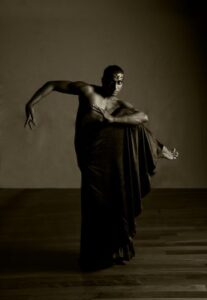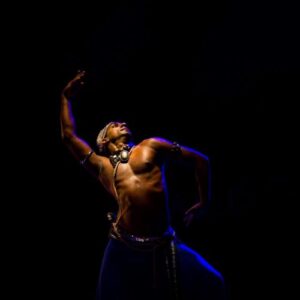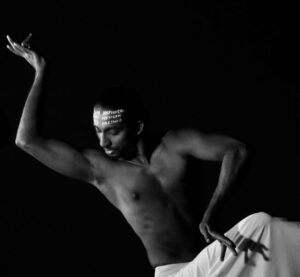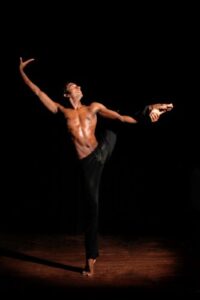Contemporary Artist Kapila Palihawdana : Pearl of the Orient

We in India believe that Sri Lanka is the land of Ravan, but most us don’t know that this country is called The Pearl of the Orient and also the Teardrop of India. If golden beaches, rising waves, misty mountains, mighty elephants, stealthy leopards, giant whales, a majestic past, lovely tea and warm smiles could sum up a country, that would be Sri Lanka and it is filled with rich culture and values. In this gorgeous land which has abundance of traditional dances there is one artist who struggled to make contemporary dance popular. Kapila Palihawdana is a pioneer in contemporary dance in Sri Lanka but his journey to become one of the dance icons of his country has not been easy at all.
Kapila had a heart-to-heart chat with me talking of all his struggles, adversity and hardship. Jaya Wewa is a salutation and slogan used in Sri Lanka, best translated as ‘May you be victorious’ or ‘Victory’ in Sinhalese. It is most often used patriotically in the phrase “Sri Lanka Jaya Wewa”. But after my emotional chat with Kapila I would like to say ‘Jaya Wewa Kapila’.
Excerpts from the interview:
How and when did your dance journey begin?
My country Sri Lanka is very rich with three types of traditional dance forms, namely Kandyan Dance, Low Country dance and Sabaragamu dance. I am blessed that I have studied all these three dances and I am qualified as a traditional dancer. I started my dance company “nATANDA” in 2002 but, I always wanted to do something different and I was looking for a new path to do my research. I got lucky to obtain a dance scholarship from Goethe Institute Colombo and I went to learn modern and contemporary dance in Germany in 2004. After a year I returned to my island and started teaching what I had learn. That is how my modern and contemporary dance journey started in Sri Lanka.
How did your country and its people accept you?
In 2005 contemporary dance did not exist in Sri Lanka and people were shocked to see what I did with Sri Lankan young dancers. Critics said that I was destroying knowledge of Sri Lankan dance forms by adding western influences. Traditional dance teachers hated me, I was stamped as taboo for Sri Lankan dance culture. People called my shows and performances as live pornography on stage only because they did not accept that women and men can have body contact in dance wearing shorts and leotards. Girls from my team were called prostitute and men homosexual. But my belief in my dance kept me going and I looked through and tolerated all that was thrown at me.
Today your presentations are being appreciated and honoured, how do you feel?
I am so humbled and proud that I have created Sri Lanka first ever professional contemporary dance company and being pioneer of contemporary dance in Sri Lanka gave me a such honour and it has become very popular now in Sri Lanka and lots of young people are following my style and getting inspired by my work. I am the first Sri Lankan International contemporary dance choreographer who choreographed a professional dance production in Ohio, USA for INLET dance Theatre. I am blessed with this opportunity which came to me in 2012. I spent three months to choreograph a production called ‘Chakra’ using Sri Lankan dance elements and Angampora Martial arts.
When one gets appreciation outside of one’s country only then your countrymen make notice and appreciate. That is what happened to me. Many performances thereafter helped me set my foot firm, ‘Ravens’ being one of them which was selected as one of the top five choreographies in Asia at a competition that was held in South Korea.
Which has been your most memorable performance?
My first ever production ‘Nachcha Geetha Waditha’ at Goethe Institute in 2005 is closest to my heart. This performance celebrated my return from Germany. My contemporary ballet ‘Slavery’ which is a show relevant to all of us in the world as artists or as human beings. We are so trapped in our own ways, we all are slaves to power, gender, money, sex, dreams, fame etc. This production is one of the most wanted performances from our repertoire.
Tell me about your iconic contemporary dance festival by nATFEST?
I launched Sri Lanka’s first international contemporary dance festival nATFEST in 2015 with 7 countries. Being an organizer, curator and founder of this festival was not easy but fortunately my dream came true with the support of Swiss Embassy, The British Council, and Tourist Board Sri Lanka. So mnay year have passed we still don’t have state funding for artists like us. That’s the biggest challenge we have. Sri Lankan government has never approached us to represent Sri Lanka in a modern way to the other parts of the world. They are sending traditional dancers to different countries to represent Sri Lanka together but, we are being neglected all the time.
What other challenges do you face?
My challenges are incredible Sandip, in Sri Lanka a modern and contemporary male dancer is labelled as a beggar, looser, worthless, ashamed young man etc. one does not have family recognition because one is a dancer, other jobs are well reputed and are considered as career but a profession of dance is not recognised. Here the mind-set of the people is very traditional and acceptance of a male and a female dancing together with close contact is still discriminated. With so much cultural pressure being a pioneer of contemporary dance in Sri Lanka has not been an easy task. I have struggled to have a proper place to practise dance, working on concrete floors my dancers and me have often got injured, which is very heart breaking. But we still keep going because the flames of passion for dance burns within us.
What are your future plans?
I love my country, Sri Lanka means joined with ‘Sri’, which means ‘resplendent’, the name Sri Lanka means ‘Resplendent Island’. Through I teach and practise modern and contemporary dances by I want my art to be as resplendent as my country. I want to continue my journey with more creations. Up till now, nATANDA has created more than 25 original contemporary and ballet productions, all choreographies send messages to the community. All productions are based on political, cultural, environmental and social issues. And ofcourse my international dance festival needs a lot of my time now.
Sandip Soparrkar holds a doctorate in world mythology folklore from Pacific University USA, an honorary doctorate in performing arts from the National American University, He is a World Book Record holder,
a well-known Ballroom dancer and a Bollywood choreographer who has been honored with three
National Excellence awards, one National Achievement Award and Dada Saheb Phalke award
by the Government of India. He can be contacted on sandipsoparrkar06@gmail.com







